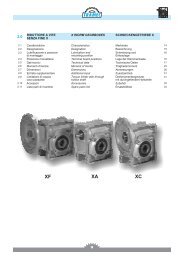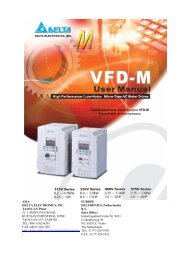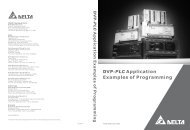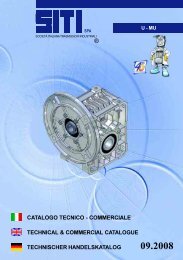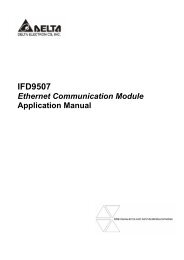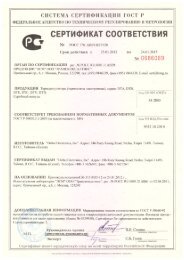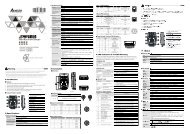Medium Voltage Application Guide
Medium Voltage Application Guide
Medium Voltage Application Guide
You also want an ePaper? Increase the reach of your titles
YUMPU automatically turns print PDFs into web optimized ePapers that Google loves.
LOGIC CONTROL CONFIGURATION<br />
3.2 Operating Configurations<br />
The equipment shall permit the user to select between multiple profiles for starting<br />
the motor.<br />
The equipment shall provide a kickstart option for starting the motor.<br />
The equipment shall permit the user to select between multiple profiles for stopping<br />
the motor.<br />
The equipment shall provide a feedback ramp option for stopping the motor.<br />
The equipment shall provide a means of automatically stopping the motor at a<br />
predetermined time or after a predetermined period of operation.<br />
The equipment shall be suitable for use with dual-speed and slip-ring motors<br />
Thermal modeling that allows the soft starter to dynamically calculate the motor<br />
temperature, predict the motors available thermal capacity, to predict whether the<br />
motor can successfully complete a start.<br />
3.3 Motor and System Protection Features<br />
The starter shall have the following adjustable protection functions included as<br />
standard. (ANSI Codes):<br />
The equipment's sensitivity and response for protection functions shall be<br />
programmable.<br />
‣ Overload (49/51)<br />
‣ Undercurrent (37)<br />
‣ Instantaneous Over-current (50)<br />
‣ Current Imbalance (46)<br />
‣ Frequency (81)<br />
‣ Auxiliary Trip A (86/97)<br />
‣ Auxiliary Trip B (86/97)<br />
‣ Excess start time (66)<br />
‣ Maximum start Time (48)<br />
‣ Starter Communications Failure (3)<br />
‣ Battery/Clock Failure (3)<br />
‣ SCR Temperature<br />
‣ Ground Fault (50G)<br />
‣ Overvoltage (59)<br />
‣ Under-voltage (27)<br />
‣ Phase sequence (47)<br />
‣ Phase Loss (47)<br />
‣ Power Loss (32)<br />
The following protection states are also provided:<br />
• Motor not detected<br />
• Auxiliary trip A<br />
• Auxiliary trip B<br />
• Network communications<br />
• EEPROM failure<br />
• Gate drive failure<br />
• Conduction 1 invalid<br />
• Conduction 2 invalid<br />
• Conduction 3 invalid<br />
• Assembly control voltage low<br />
5







